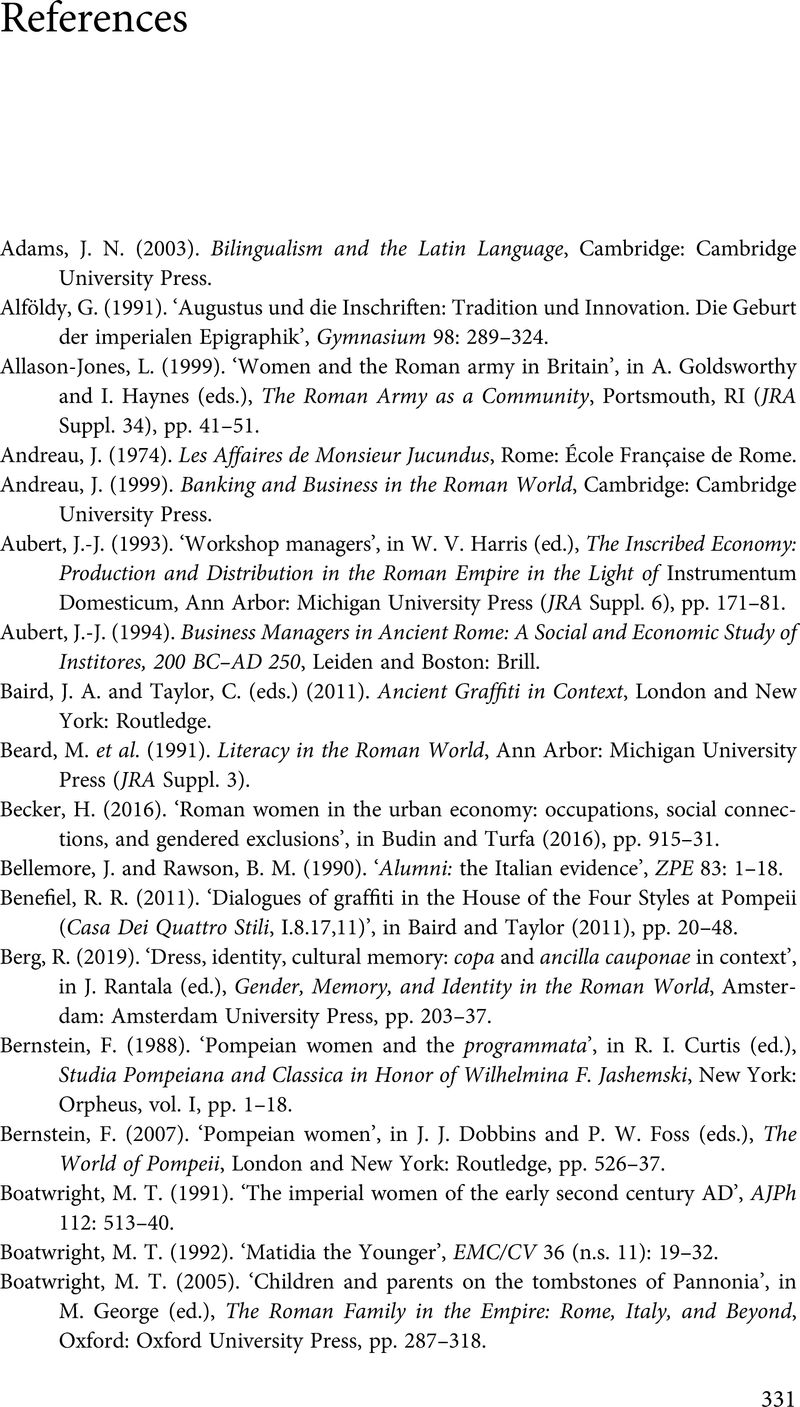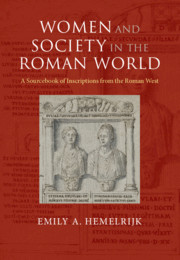References
Published online by Cambridge University Press: 06 November 2020
Summary

- Type
- Chapter
- Information
- Women and Society in the Roman WorldA Sourcebook of Inscriptions from the Roman West, pp. 331 - 341Publisher: Cambridge University PressPrint publication year: 2020



